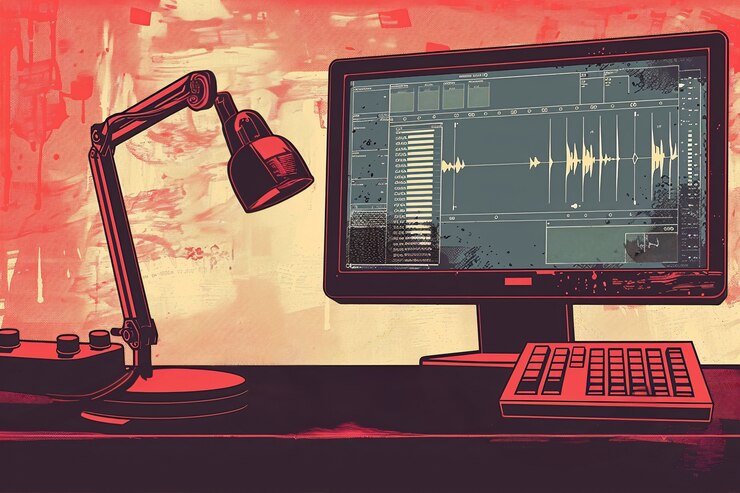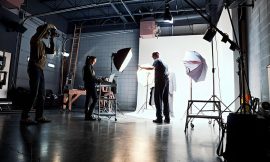In the world of 2D animation, visual artistry is often at the forefront of audience attention. Bright colors, dynamic movements, and captivating character designs draw viewers in and keep them engaged. However, beneath the surface of these visual elements lies a crucial component that significantly enhances the overall experience: sound design. This blog explores the critical role of sound design in 2D animation, discussing how it complements visual storytelling, evokes emotions, and creates a more immersive experience for the audience.
Understanding Sound Design in 2D Animation
Sound design in animation encompasses various auditory elements, including dialogue, sound effects, and music. Each of these components works synergistically to reinforce the narrative and emotional undertones of the animated piece. While visuals are essential for conveying the story, sound adds layers of depth and context that can alter a viewer’s perception and interpretation.
1. The Role of Dialogue
Dialogue is a fundamental element of sound design, providing character voices that help define personalities and relationships. The choice of voice actors, their delivery, and the emotions they convey through their performances significantly impact how the audience perceives characters.
Voice Characterization:
- Each character’s voice can reflect their personality, age, and background. For example, a gruff voice might signify a tough character, while a soft, gentle tone could represent a nurturing figure. The subtleties in voice modulation and inflection can breathe life into animated characters, making them relatable and memorable.
Emotional Resonance:
- Dialogue delivery is instrumental in conveying emotion. A well-timed pause or a change in pitch can indicate surprise, anger, or joy. This nuance in vocal performance can enhance the viewer’s emotional engagement with the story, allowing them to connect with the characters on a deeper level.
2. The Power of Sound Effects
Sound effects are essential for creating a believable and immersive world within 2D animation. They serve to enhance the action, support visual cues, and add realism to the animated environment.
Enhancing Visual Actions:
- The impact of a punch, the whoosh of a character leaping, or the rustling of leaves can all be amplified through sound effects. These auditory cues help establish a rhythm and pace to the animation, making the action more engaging and dynamic.
Building Atmosphere:
- Sound effects also contribute to the overall atmosphere of the animation. Background noises, such as city sounds, nature, or crowd chatter, can transport viewers to different settings, making the world feel more lived-in and authentic.
3. The Significance of Music
Music is one of the most powerful tools in sound design. It sets the tone for the narrative and can significantly influence the emotional response of the audience.
Creating Emotional Depth:
- The right musical score can enhance the emotional weight of a scene. For instance, a triumphant orchestral piece during a character’s victory can elevate the sense of accomplishment, while a melancholic tune can underscore moments of sadness or loss.
Pacing and Timing:
- Music can dictate the pacing of a scene, guiding the audience through the narrative flow. A fast-paced score can heighten excitement during action sequences, while a slower melody can provide moments of reflection or contemplation.
4. The Relationship Between Sound and Animation
The interplay between sound and animation is crucial in creating a cohesive viewing experience. Sound can be synchronized with visual elements to enhance the storytelling process.
Synchronicity:
- Proper timing between visual and auditory cues can amplify comedic moments or dramatic reveals. For example, a character’s exaggerated movement paired with a comedic sound effect can enhance humor, while a sudden silence followed by a loud sound can create suspense.
Foreshadowing:
- Sound design can also be used as a storytelling device to foreshadow events or reveal character traits. A subtle, ominous score can signal danger or tension before it visually appears, preparing the audience for what’s to come.
5. Sound Design as a Character
In some cases, sound design itself becomes a character within the story. Unique sound motifs can be associated with particular characters or themes, creating auditory signatures that enhance storytelling.
Character Themes:
- Just as visual motifs can symbolize characters or ideas, sound can do the same. For example, a mischievous character may have a playful, whimsical sound motif, while a villain might be associated with dark, foreboding music.
Sound as a Narrative Device:
- Sound effects can also take on narrative significance, such as a recurring sound that signals the presence of a character or a thematic element. This creates a sense of continuity and enhances audience engagement.
6. The Impact of Technology on Sound Design
The advancement of technology has revolutionized sound design in 2D animation. Animation studios now have access to sophisticated tools that allow for more creative soundscapes and effects.
Digital Tools and Software:
- Software such as Pro Tools, Adobe Audition, and Ableton Live provides sound designers with powerful editing and mixing capabilities. These tools enable the creation of intricate sound layers, making it easier to experiment with different auditory effects and compositions.
Integration with Animation Software:
- The integration of sound design with animation software allows for seamless synchronization between visual and auditory elements. This streamlining of the production process helps maintain the creative vision while reducing the likelihood of errors or misalignments in timing.
7. The Role of the Animation Studio
Animation studios, especially those based in Hollywood, play a pivotal role in sound design. They bring together teams of talented sound designers, composers, and voice actors who collaborate to create a cohesive auditory experience.
Collaboration and Communication:
- Effective communication between animators and sound designers is crucial. When both teams understand the story and the desired emotional impact, they can work together to create an integrated final product.
Investing in Quality Sound Design:
- High-quality sound design requires investment, and established animation studios in Hollywood often have the resources to bring in experienced professionals. This investment translates to better overall production quality and a more polished final product.
8. Case Studies in Effective Sound Design
To illustrate the impact of sound design in 2D animation, let’s look at a few notable examples.
Disney’s “Aladdin”:
- The animated classic “Aladdin” showcases the powerful combination of dialogue, sound effects, and music. Robin Williams’ iconic voice performance as the Genie brought a unique charm to the character, while Alan Menken’s score created a vibrant atmosphere that captured the spirit of the story.
Pixar’s “Inside Out”:
- In “Inside Out,” sound design plays a vital role in conveying the emotions of the characters. The musical score dynamically shifts with the emotional landscape, enhancing the viewer’s connection to the narrative. The use of distinct sound effects for each emotion also helps to define their personalities and interactions.
9. The Future of Sound Design in 2D Animation
As technology continues to advance, the future of sound design in 2D animation looks promising. The integration of virtual reality (VR) and augmented reality (AR) could open new avenues for immersive storytelling.
Interactive Soundscapes:
- In VR and AR environments, sound design can become more interactive, allowing users to experience sound in a three-dimensional space. This could create an unprecedented level of engagement, where viewers feel as though they are part of the animated world.
Artificial Intelligence in Sound Design:
- AI-driven tools are emerging in sound design, allowing for automated sound generation and manipulation. This could lead to new creative possibilities, enabling sound designers to experiment with innovative auditory experiences that were previously unimaginable.
Conclusion
In the realm of 2D animation, sound design is not merely an afterthought but a vital component that enriches storytelling and emotional engagement. The synergy between dialogue, sound effects, and music creates an immersive experience that captivates audiences and enhances the overall quality of the animation. As technology advances and animation studios, particularly in Hollywood, continue to innovate, the importance of sound design will only grow, paving the way for more dynamic and engaging animated stories. Whether you’re creating a short film, a series, or an advertisement, investing in sound design is essential to elevate your 2D animation services and create a lasting impact on your audience.




